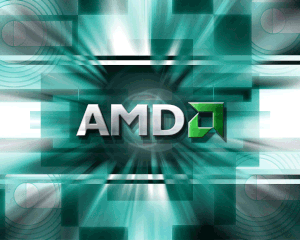
After months of speculation, Sony has finally lifted the lid on the inner workings of the PS4, revealing in detail the hardware specifications for their new flagship console. While we could wax lyrical about the technology within, we'll leave it with the fine folks at Sony Computer Entertainment to get you up to speed. Here's what the manufacturer's official press release reads:
PS4 also fluidly connects players to the larger world of experiences offered by PlayStation, across the console and mobile spaces, and PlayStation® Network (PSN). The PS4 system architecture is distinguished by its high performance and ease of development. PS4 is centered around a powerful custom chip that contains eight x86-64 cores and a state of the art graphics processor.
The Graphics Processing Unit (GPU) has been enhanced in a number of ways, principally to allow for easier use of the GPU for general purpose computing (GPGPU) such as physics simulation. The GPU contains a unified array of 18 compute units, which collectively generate 1.84 Teraflops of processing power that can freely be applied to graphics, simulation tasks, or some mixture of the two.
PS4 is equipped with 8 GB of unified system memory, easing game creation and increasing the richness of content achievable on the platform. GDDR5 is used for this memory, giving the system 176 GB/second of bandwidth and providing a further boost to graphics performance. The end result for gamers is new games with rich, high-fidelity graphics and deeply immersive experiences that shatter expectations.
Main Processor
Single-chip custom processor
CPU : x86-64 AMD “Jaguar”, 8 cores
GPU : 1.84 TFLOPS, AMD next-generation Radeon™ based graphics engineMemory
GDDR5 8GBHard Disk Drive
Built-inOptical Drive
(read only)
BD 6xCAV
DVD 8xCAV
I/O
Super-Speed USB (USB 3.0) , AUXCommunication
Ethernet (10BASE-T, 100BASE-TX, 1000BASE-T)
IEEE 802.11 b/g/n
Bluetooth® 2.1 (EDR)AV output
HDMI
Analog-AV out
Digital Output (optical)Specifications are subject to change without notice.
So, there you have it. Based on today's demonstrations we would suggest that the hardware more than packs a punch – but at what cost?





Comments 11
So. Much. Power. Wonder how the 720 will compare.
So they did go with the "Jaguar" chip after all, I guess this just goes to show how capable mobile chips are these days.
Those are some rather impressive specs, especially the 8GBs of GDDR5 RAM. Can't wait to see how things unfold.
Can someone put that in to English for those who aren't tech heads? What the hell are Teraflops? I haven't heard of that until today.
@Trikeboy
Think of a teraflop as a "huge" swarm of sparrows darting around the sky in sync, vs. a flock geese flying south. Basically a lot more data being processed at once, so everything runs faster, smoother, and can handle more task.
im sorry... but the new xbox is gonna be NO MATCH for the PS4!!! >
Extraordinary power?
How about harness the power of a mid range laptop?
Yes its a big leap from the PS4, but the jaguar CPU is intended as a rival for Intel atom, and was destined for tablets and entry level laptops.
The only extraodinary thing about the PS4 is the RAM, a roomy 8GB of nice fast RAM will finaly allow games to increase thier scope and complexity.
To Trikeboy:
A Terraflop is a metric for measuring computing performance, 1 Terraflop is a trillion floating point operations in a second. GPU's are very good at floating point math.
To put it in perspective, the playstation 3 GPU managed 0.4 Terraflops, so 1.83 Tflops makes the PS4 about 4 and a half times more powerful, an nVidia GTX 690 in a high end PC does around 5.63 Terraflops.
I find the ram to be the most surprising asoect of the hardware. Most of us were only expecting about 4GB and also the fact its GDDR5. Im looking forward to reading more detailed specs when they are released but I think we're gonna have to wait for the Next Xbox to be announced first
The specs are good, but not insane, which is a good thing considering I don't want to pay $599! The cpu seems disappointing, but does a game console really need an outstanding cpu? from what I understand the GPU is quite capable, and with the extremely fast RAM, and the cpu/gpu being placed together, there is almost no latency between the components, and they will be able to send as much information as possible at once.
One system, to rule them all.
@craigun Maybe not
Microsoft now have the advantage of knowing Sony's game plan.
Either way, this is an interesting direction for consoles to take, and it shows that Sony learned some hard lessons well with the PS3, namely make it affordable, make it easy to develop for and give it enough ram that developers are not constantly constrained by what they can shoehorn into the available space (hint; think Skyrim for an example of what happens when you cram too much into too little ram)
I'm not a console gamer myself, but like it or not consoles are the baseline for most big titles, and having 8 gig of ram as the baseline really is a game changer for the industry, so I am very excited to see what games will be developed in the future.
Leave A Comment
Hold on there, you need to login to post a comment...